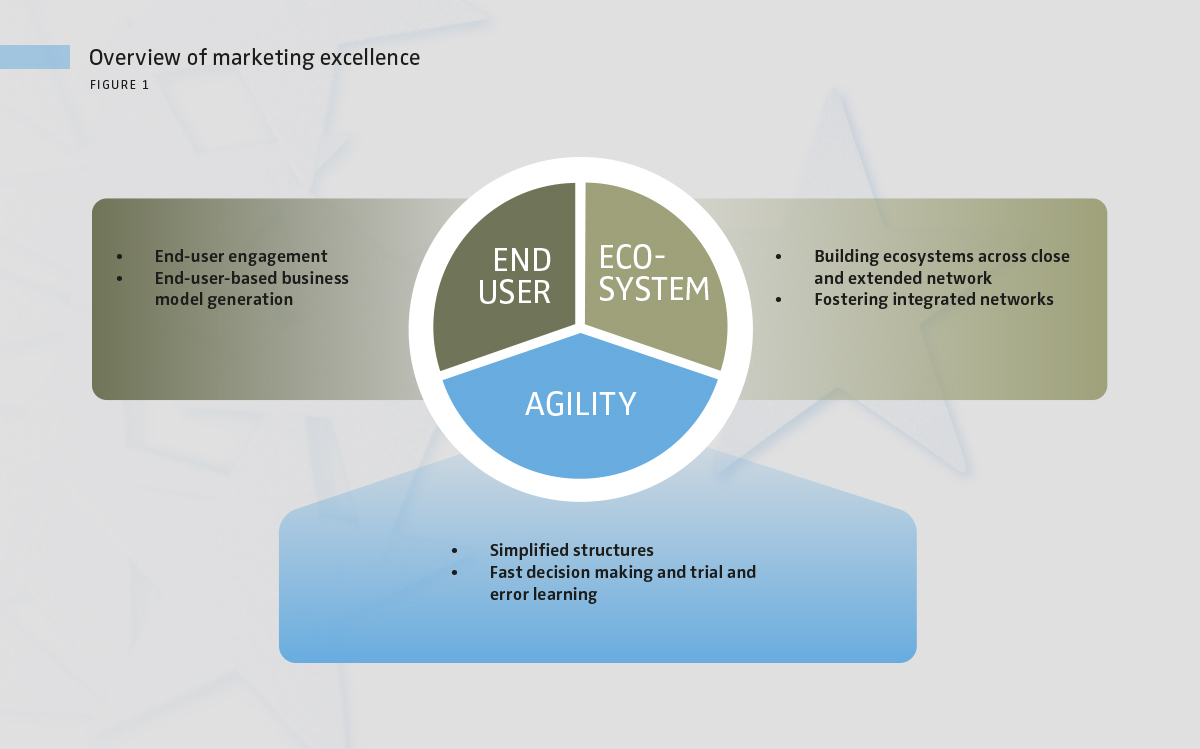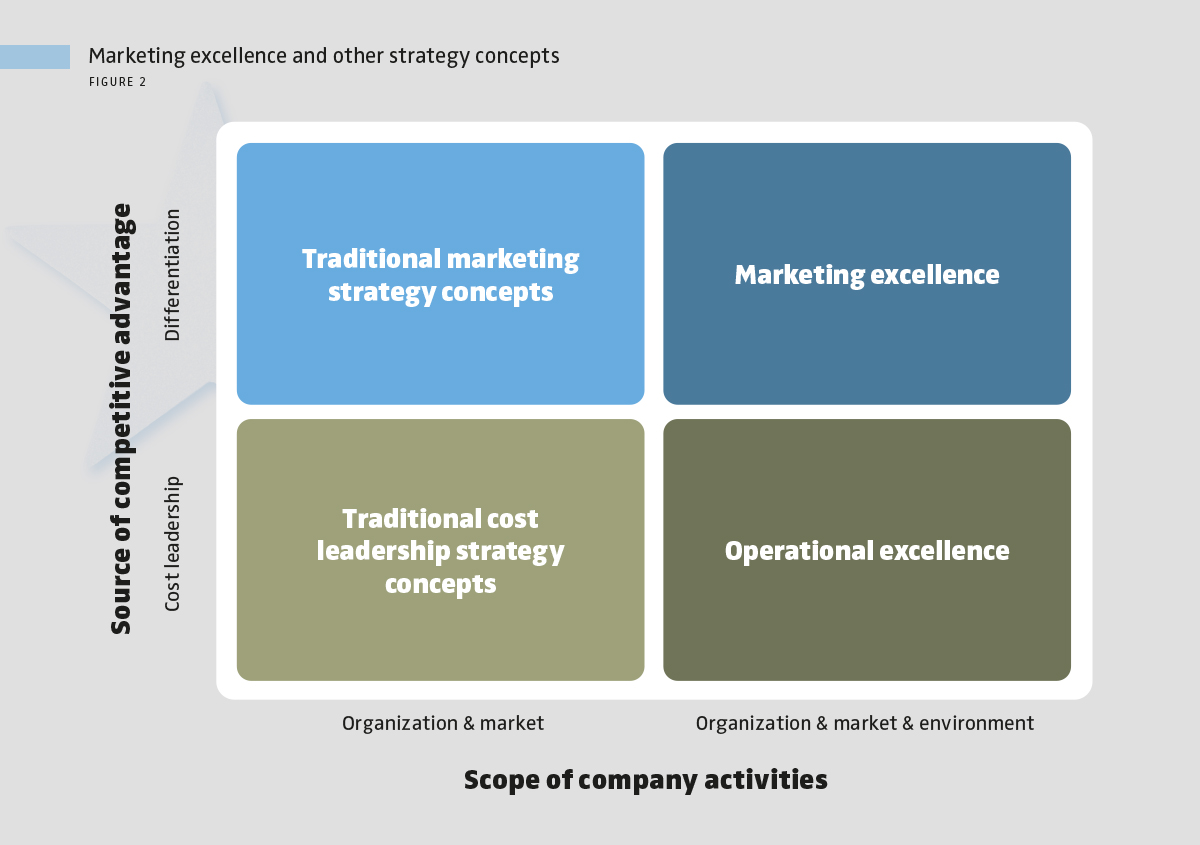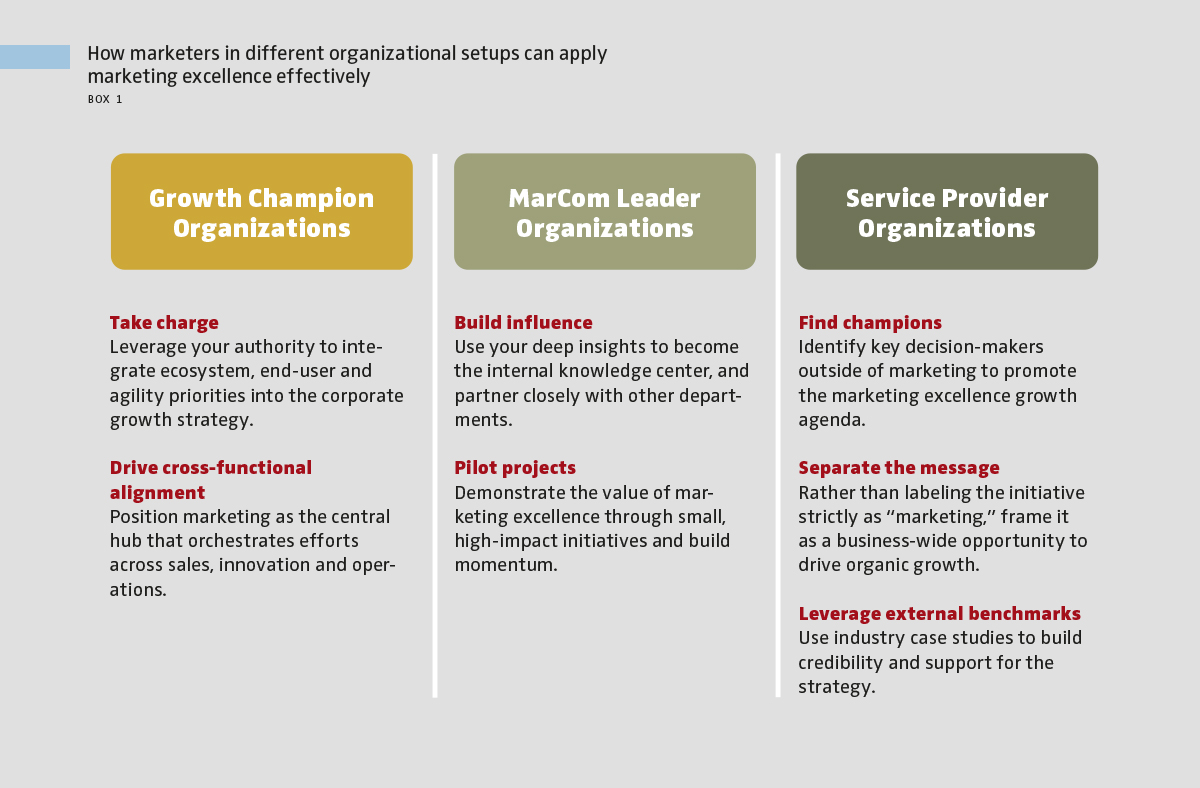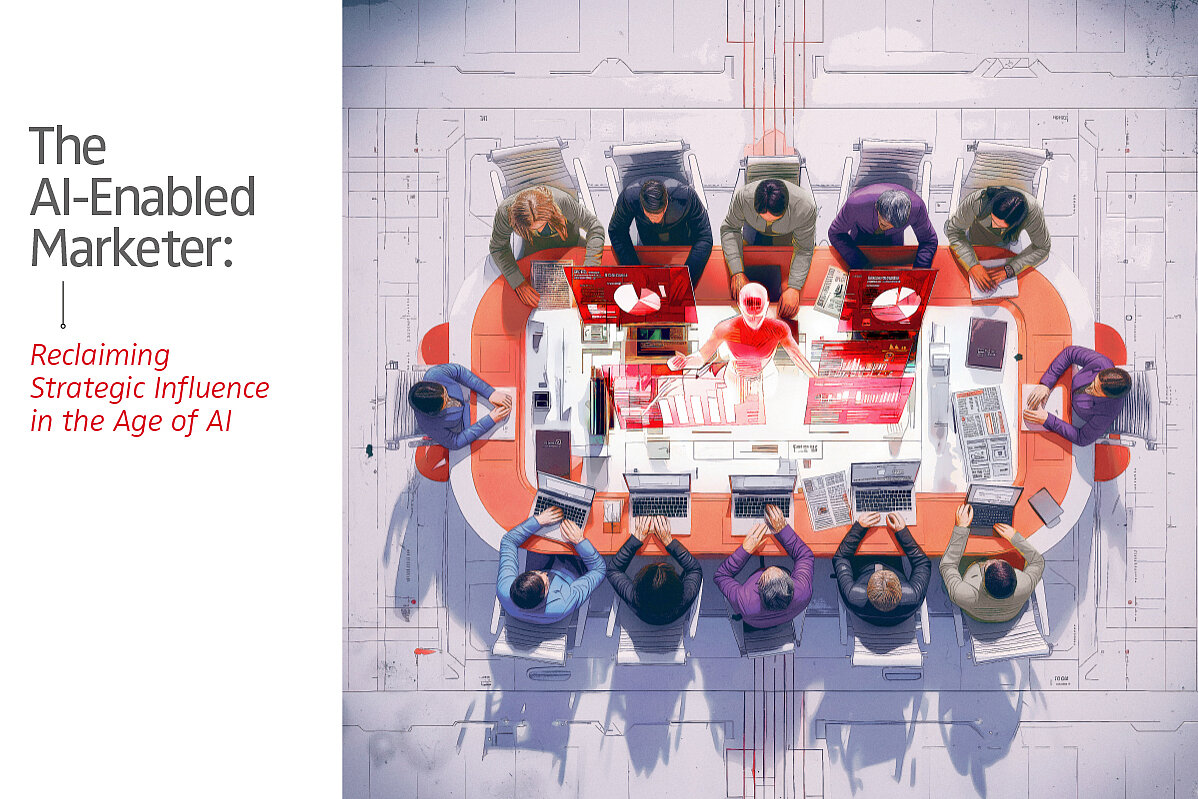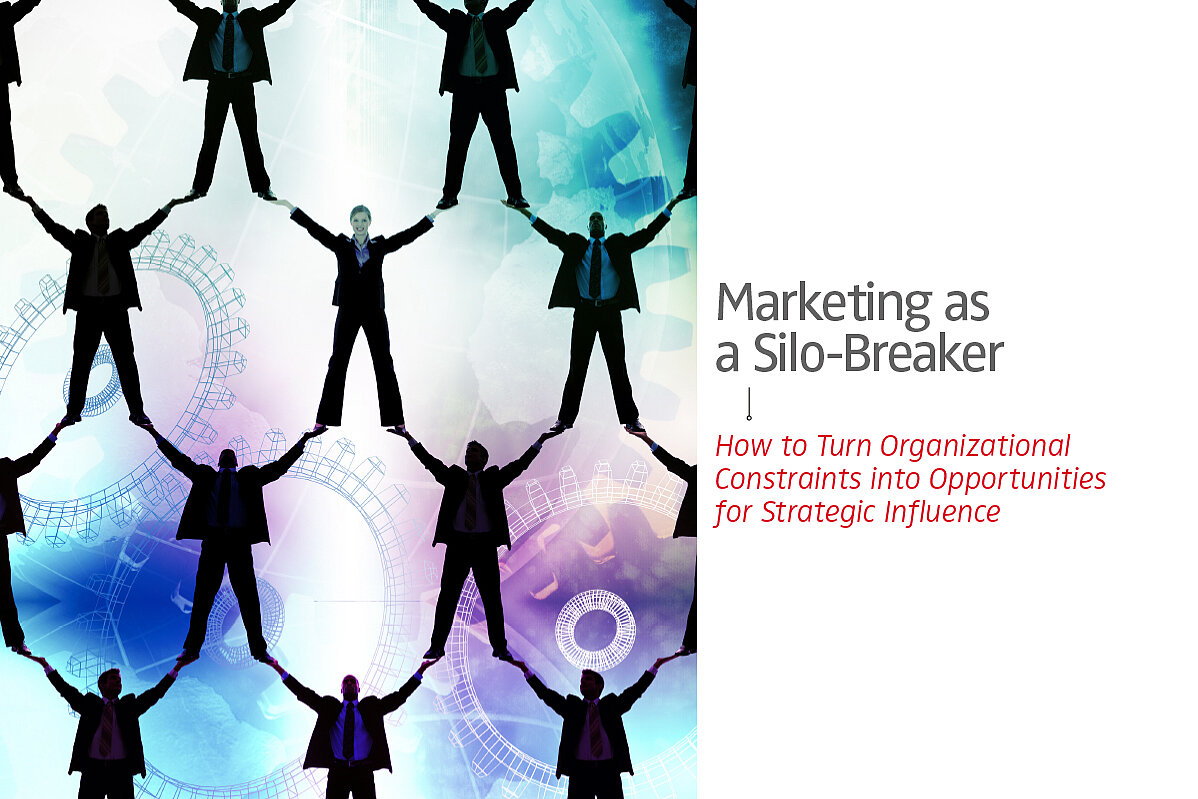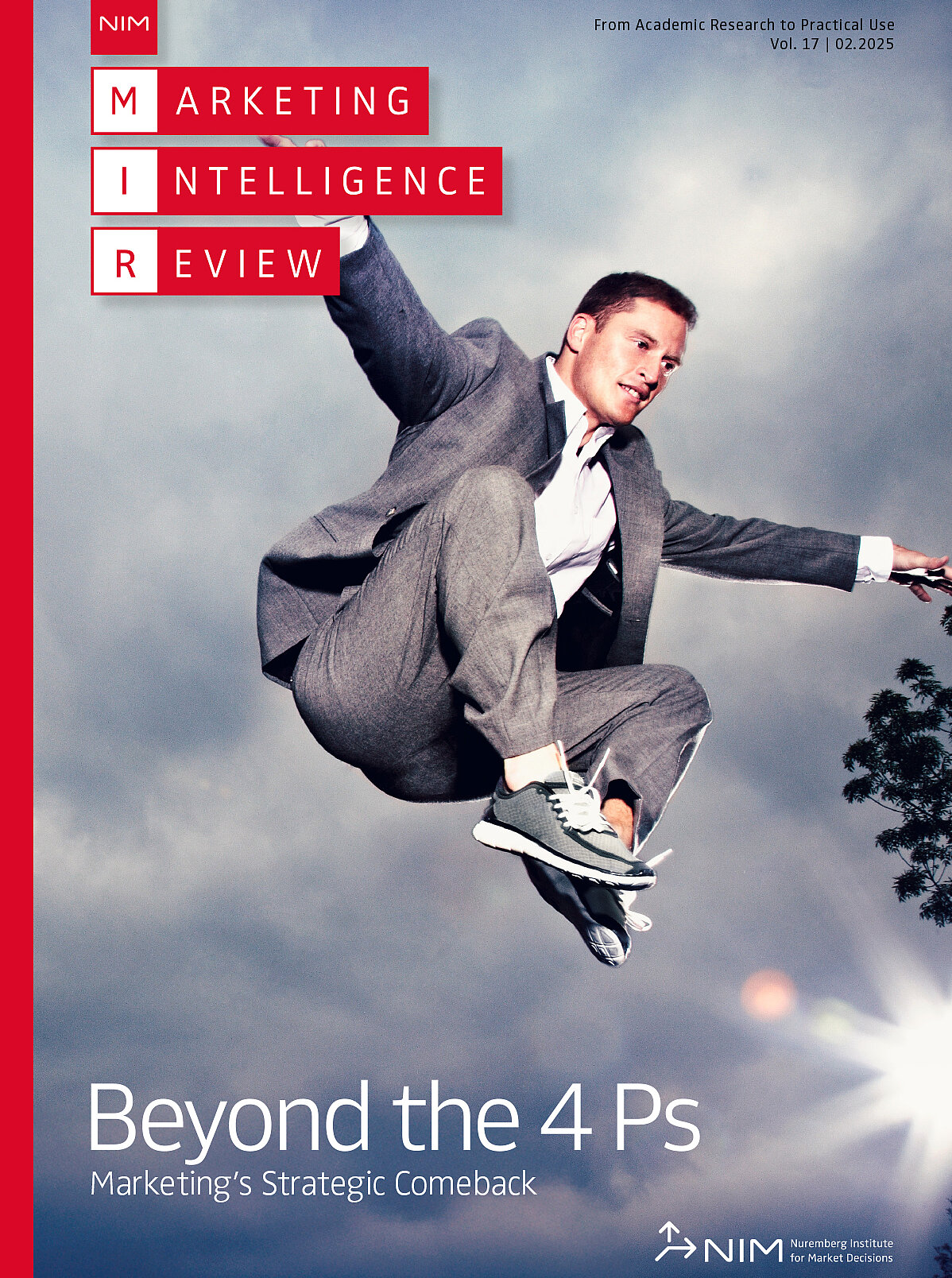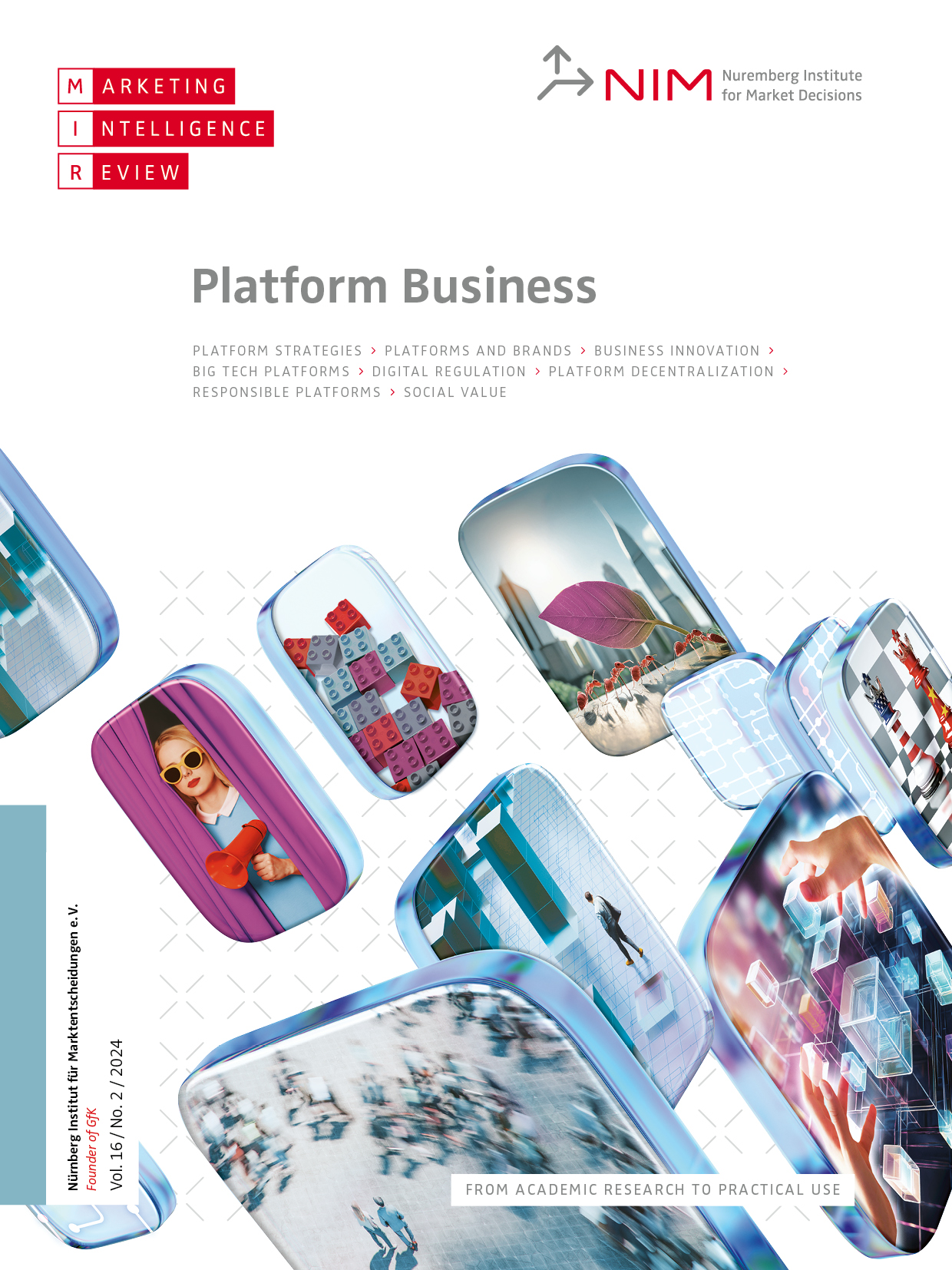Marketing Excellence: The Organic Growth Playbook for the Digital Age
In today’s fast-changing market environment, the role of marketing has shifted dramatically. Marketers now face challenges from disruptive technologies—such as artificial intelligence, extended reality and blockchain—as well as rapidly evolving customer journeys, novel touchpoints and digital channels. Meanwhile, traditional marketing mix activities such as the “4 Ps” – product, price, promotion and place – are becoming increasingly fragmented across different business functions, making marketers’ roles more difficult and complex.
Long-held principles such as “the customer is always right” are no longer sufficient in this new context. Recent research shows that today’s growth champions do not rely solely on customer-centricity. Instead, they strategically build expansive, mutually beneficial networks across industries and shape business models around end users rather than immediate customers. This broader, more comprehensive approach to growth is what we call marketing excellence.
Understanding marketing excellence
At its core, marketing excellence is a comprehensive growth strategy built on three interrelated priorities.
1. Marketing Ecosystem Priority
Companies pursuing marketing excellence do not operate in isolation or limit themselves to traditional partnerships. Instead, they build extensive, mutually beneficial networks – linking internal teams, external partners (often from beyond traditional industry boundaries) and even competitors. These networks form cohesive marketing ecosystems. For example, consider a chemical company collaborating with a data analytics company to jointly offer predictive maintenance services, significantly extending its reach beyond conventional industry limits and creating entirely new revenue streams.
2. End-User Priority
Rather than relying on traditional customer orientation, companies committed to marketing excellence place their primary focus on the end user – the ultimate beneficiary of the company’s value chain. This involves redesigning essential processes from the end user's perspective and leveraging deep insights about their needs to develop more relevant, sustainable and innovative business models. For example, a B2B automotive supplier adopting the end-user priority might reorganize core business processes such as recruiting, training, innovation and sales by consistently asking, “What does the end user really need?” thereby centering critical activities around the final customer.
3. Marketing Agility Priority
In today’s rapidly evolving markets, speed and adaptability are critical. Marketing excellence does not merely mean reacting quickly to market changes; it also means anticipating and proactively managing those shifts. To achieve this marketing agility, many successful companies leverage advanced technologies. For example, a durable goods manufacturer adopting the marketing agility priority used extended reality technology to test product concepts virtually, significantly speeding up innovation cycles and reducing reliance on physical prototypes.
Together, these three priorities form an integrated framework that drives immediate performance and builds a robust foundation for sustained organic growth. Figure 1 summarizes the marketing excellence framework and its key elements.
The evolving role of marketing excellence
How can companies achieve organic growth? This question has always been at the heart of marketing. Over the years, various strategies have been proposed – from differentiation and market orientation to building marketing capabilities and now, marketing excellence. Although these concepts are related, they differ in their approach and scope. Marketing excellence builds on earlier marketing strategy concepts by emphasizing growth through new revenue streams and innovation rather than cost leadership. Unlike these earlier concepts, marketing excellence takes a much broader and more comprehensive approach. As Figure 2 shows, companies pursuing marketing excellence aim to shape not only the organization and the market but also the wider external environment — for example, by leveraging new, distal partnerships to develop additional revenue streams or by identifying untapped potential based on end-user needs. This comprehensive approach to both the immediate business landscape and the broader market environment enables companies to exploit novel growth opportunities.
Why is such a broad approach desirable?
The answer is that marketing excellence, when implemented comprehensively, leads to significant and measurable growth outcomes. Recent studies indicate that, over time, companies adopting marketing excellence have consistently outperformed those pursuing more traditional and focused growth strategies. For example, simulations show that an investment of $100 in a portfolio of businesses pursuing marketing excellence in the year 2000 would have grown to $1,313 by 2018, compared to just $744 for businesses following a conventional market orientation strategy.
Achieving marketing excellence can be challenging, but my research with colleagues provides actionable guidance for companies and senior managers, as well as for marketers in different organizational structures.
Companies and senior managers: Update the marketing playbook
Marketing excellence offers a powerful framework to coordinate marketing activities across an organization. By integrating new priorities, businesses can expand, energize, streamline and communicate their organic growth activities.
> Expand growth activities
Go beyond the traditional marketing mix by integrating ecosystem-building, end-user insights and agile practices throughout your growth process – from insight generation and strategy development to execution. By broadening marketing's scope, the marketing excellence framework enables leaders to effectively expand their growth activities.
> Energize your marketing workforce
Invest in talent that thrives across functional boundaries and adapts flexibly to change. Focus on hiring individuals with diverse experiences rather than relying strictly on industry veterans. Update your recruitment, training and development practices to encourage cross-functional collaboration, environmental shaping activities and flexible structures.
> Streamline objectives across the organization
Implement clear and actionable KPIs that effectively align activities across all organizational levels. Instead of focusing solely on traditional financial indicators, use metrics that evaluate specific activities, such as the effectiveness of ecosystem collaborations or the speed of responding to end-user needs. Activity-based KPIs ensure alignment of employee behaviors with the strategic goal of marketing excellence.
> Communicate success and best practices
Regularly share internal and external success stories to reinforce the impact and benefits of marketing excellence to secure buy-in across the organization. Leverage both traditional and digital communication channels – such as company intranets, internal social media platforms, employee webinars, townhall meetings and mobile apps – to regularly showcase successes. Highlight best practices, celebrate achievements from cross-functional initiatives and use engaging formats like short videos, podcasts or interactive Q&A sessions to reach employees effectively.
Companies pursuing marketing excellence aim to shape not only the organization and the market but also the wider external environment.
Marketers: Embrace change, but be mindful of structure
For decades, marketing theory assumed that marketers control the 4 Ps. However, today’s business environment is marked by shared and scattered responsibilities. In many organizations, no single function fully controls all aspects of the marketing mix. This shift raises a critical question: How can marketers still lead and influence growth when their traditional levers have changed? The answer depends on the type of marketing organization they operate in. Marketing excellence provides a strategic framework that allows marketers – regardless of their level of authority – to contribute to growth.
In Growth Champion Organizations, where marketing is the core growth function with decision-making authority over key activities such as pricing, product development and strategic positioning, marketers’ key task is to leverage their authority to integrate and leverage the whole ecosystem while remaining agile and driving cross-functional alignment. In Marcom Leader Organizations, where marketing primarily oversees branding and communications and has limited authority over broader growth activities such as pricing, sales and distribution, marketers’ role is different. They must demonstrate the value of marketing excellence in small pilot projects and partner closely with other departments.
In Service Provider Organizations, marketing operates as a support function and is often seen as an executional team with no direct control over business strategy or growth decisions. In such organizational settings, marketers should identify key decision makers outside of marketing to promote the marketing excellence growth agenda and frame their projects as growth rather than marketing initiatives. Box 1 summarizes how marketing professionals can spur growth in these different types of marketing organizations.
Marketing excellence is a pathway to long-term success
Marketing excellence equips organizations with a comprehensive framework to drive organic growth in the digital age. By expanding the focus beyond traditional customer-centric approaches to include integrated ecosystems, end-user insights and agile practices, companies can create sustainable competitive advantage. In an era characterized by rapid advancements in AI, economic uncertainty and unpredictable market conditions, marketing excellence presents an effective path forward to coordinate efforts related to organic growth. Whether you are a company updating its overall playbook, a general manager leading change or a marketer redefining your role, embracing marketing excellence offers a pathway to coordinated, long-term success.
FURTHER READINGS
Atefi, Y., Hohenberg, S., Janani, S., & Zhou, W. (2025). The growth department: The emerging role and impact of chief growth officers and their cross-functional teams. EXPRESS. https://doi.org/10.1177/00222429251365938
Homburg, C., Theel, M., & Hohenberg, S. (2020). Marketing excellence: Nature, measurement, and investor valuations. Journal of Marketing, 84(4), 1-22. https://doi.org/10.1177/0022242920925517
McAlister, L., Germann, F., Chisam, N., Hayes, P., Lynch, A., & Stewart, B. (2023). A taxonomy of marketing organizations. Journal of the Academy of Marketing Science, 51(3), 617-635. https://doi.org/10.1007/s11747-022-00911-5
Moorman, C., & Day, G. S. (2016). Organizing for marketing excellence. Journal of Marketing, 80(6), 6-35. https://doi.org/10.1509/jm.15.0423
Morgan, N. A., Menon, A., Jaworski, B. J., & Musarra, G. (2025). Marketing strategy implementation: Why is it so hard? Journal of Business Research, 190, 115231.
doi.org/10.1016/j.jbusres.2025.115231

